What’s New in Large Format Sensor Cameras
NEW YORK and LOS ANGELES — It wasn’t all that long ago that the single-sensor color camera design was for cheapie consumer cameras. However, large-format single-sensor cameras have today taken over a significant part of the professional camera market, especially for 4K production. Companies that have entered that market have been staying busy improving their wares.
Seemingly out of nowhere a few years ago, Blackmagic Design unveiled a large-sensor camera. Since that time, the company has rolled out new technology and camera designs.
“It hasn’t been that long since we first announced we were in the camera market to where we are today,” said Blackmagic’s senior regional manager for eastern North America, Bob Caniglia. “Now we’ve got many different versions of cameras. Studio camera, pocket camera—it’s been an interesting ride.”
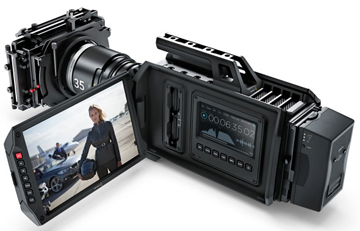
Blackmagic Design Ursa
At NAB 2014, the company lifted the curtain on a 4K studio camera for less than $3,000 using a micro 4/3 camera sensor and a B4 mount that will allow it to use existing 2/3-inch lenses. Also shown at NAB was Blackmagic’s Ursa digital cinematography 4K camera, which has a field-upgradable sensor.
“There are four hex bolts on the front of the camera,” said Caniglia, “and those four hex bolts allow you to remove the full turret, which includes the sensor as well as the lens mount. And so when there’s a new one available, you could swap to the new sensor. That way the body itself preserves much of its value.”
A recent addition to the large-format single-sensor lineup is the AJA Cion, which uses a 4K CMOS APS-C sensor. The Cion bucks the latest trend toward dSLR and boxy cameras by adopting a design reminiscent of an ENG camera. The Cion uses popular PL-mount lenses.
Get the TV Tech Newsletter
The professional video industry's #1 source for news, trends and product and tech information. Sign up below.
Since entering the cine camera market three years ago, Canon USA has pursued the large-sensor market on two fronts.
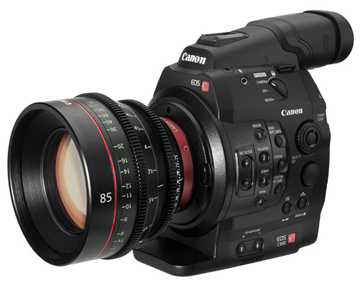
Canon EOS 300
“We’re obviously working with very large-frame sensors, 36x24mm sensors that we use in our DSLRs,” said Canon national marketing executive Larry Thorpe. “And with every generation that we come out with, and they come out with some frequency with that domain of the DSLR, we’re always working on noise and dynamic range. Those are the two challenges, especially when you increase the pixel count, because once your photo-site goes down in size, you’re confronted with the challenges of noise and dynamic range.”
“Then separately, since we entered the cinematography world with the Cinema EOS systems, we have major efforts going, continuing to develop sensors there,” Thorpe said.
Both Panasonic and Sony have made waves with low-cost 4K cameras that push the price of 4K production down to that of HD dSLR cameras. Sony’s A7s uses a full-frame 35mm sensor, sells for well under $2,000 and accepts a variety of lenses. It requires an outboard recorder to create 4K video files, but a fully outfitted kit can be had for less than $5,000.
If that’s too rich for you, then Sony has the FDR-AX1 Handicam that makes 4K with a 1/2.3-inch 8.3-megapixel Exmor R CMOS image sensor. Another offering in Sony’s line is the FDR-AX100/B, which uses a 4K 1-inch Exmor R CMOS sensor with direct pixel readout and has a cost of just $2,000—and that includes a fixed 12x zoom lens.
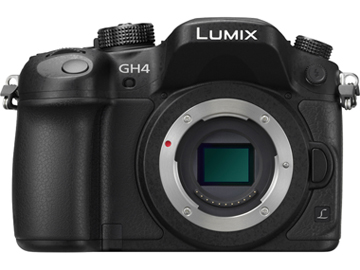
Panasonic GH4 camera body with micro four-thirds sensor
Panasonic got a lot of attention with the release of its Lumix DMC-GH4 camera, which is equally at home shooting stills or video. For less than $2,500 equipped with a good lens, the GH4 can shoot 4K video using a micro-4/3s sensor and record it on an SD memory card. If you want to work at HD quality, the GH4 can record 1080p at frame rates up to 96 fps for smooth slow-motion effects.
If that’s too much to spend, Panasonic recently released the Lumix FZ1000 that has many of the same specs as the GH4, but with a fixed 16x zoom lens and a reduced feature set. The price is just $900, which puts it into risky point-of-view camera range where you might be willing to sacrifice the camera to get the shot.
Grass Valley made the decision to avoid large-format single-sensor design cameras in order to concentrate on the 4K live broadcast market with three-sensor 2/3-inch cameras. Grass Valley’s senior product marketing manager for cameras, Klaus Weber, pointed out it’s a matter of picking the right tool for the job.
“The Super 35 single sensor design is a compromise, but a good compromise for film-style shooting where you want a shallow depth of field. But for live action, you don’t want to be limited to your in-focus subjects limited to a few centimeters, and everything in front of or behind that out of focus.”
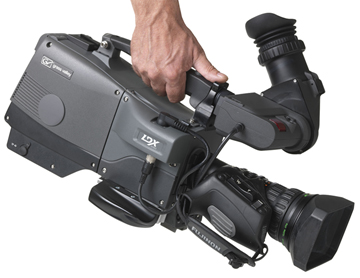
Grass Valley LDX
He said that in developing the design for the three 2/3-inch sensor in its LDK camera line, it was important to maintain the largest pixel size that was practical.
“If you look at sensors for high-def cameras, it all starts with pixel size,” Weber said. “They all have a pixel size or pixel pitch of 5 to 6 micrometers, and there’s a good reason because it’s the best technology and the best compromise between sensitivity, dynamic range, and what you need for good performance in a reasonably small size.”
The camera provides two million pixels each for the red, green and blue CMOS chips.
Another camera maker that showed a 2/3-inch 4K camera at the recent IBC was Hitachi Kokusai with its SK-UHD4000 Ultra HD. Since camera makers use the green channel to generate the sharpness and luminance of a camera’s output, Hitachi added a fourth sensor to its system, allotting two of the sensors for green pixels. This boosts the amount of pixels overall.
“The camera comes equipped with tried-and-true functions and features specifically designed for TV program production in the studio and in the field,” said company vice president for sales and chief operating officer Sean Moran in the product’s announcement.
Like Grass Valley, Hitachi emphasized the advantages of being able to use 2/3-inch form-factor lenses — including long zooms for live sports and event production.
When it looked to get into the large sensor camera market, Ikegami chose to partner with a venerable company with deep roots in the film industry, ARRI, which had already developed a large-format sensor system. The result was the HDK-97ARRI Super 35mm Format Camera.
“It’s the same sensor as ARRI uses in its Alexa and Amira cameras,” said Ikegami vice president for engineering Alan Keil. “The ARRI sensor does have significantly more dynamic range than most other sensors.”
Keil noted that the ARRI sensor is not quite 4K.
“ARRI uses a number in the mid-3s, so I call it a 3K sensor.”
At the recent IBC Ikegami unveiled a new base station for the camera system that will upconvert to 4K.
“This particular one is not an upconverter that we had used before, so it is in that way a new design, but it’s working off conversions that we’ve done many times in the past.”
Panasonic has long been a player in the digital cinematography market with its Varicam brand of cameras, so when the company was designing its first-large sensor camera, the Varicam 35, it wanted to make a camera that capitalized on the Varicam look.
���Customers always liked the Panasonic Varicam look, the way it would handle creamy-like, real-life skin colors, real-life colors of nature and life, without being hyper sharp, video-gamish,” said Panasonic senior product manager Steve Cooperman. “In the Varicam camera, we have different type gamma settings, shall we say, we have a film-look type camera. We’ve talked to customers in the past couple of years in focus groups, what they liked in the previous Varicam cameras in HD, maybe what they liked in competitive cameras, and what they don’t like. We’ve integrated that within the Varicam camera.”
Although the imager in the front-end of Panasonic’s Varicam 35 is of very different design from the company’s three-sensor Varicam HS high speed camera, the two models share the same back end processing and recording section.
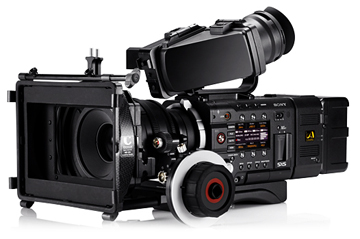
Sony CineAlta 4K
Breaking with its practice of announcing new camera models each year at NAB, at the 2014 convention Sony Electronics concentrated on advances in technology in its existing CineAlta 4K camera lineup. The same held true for the recent IBC.
“We continue to offer powerful firmware updates along a consistent development timeline for the F5 and F55 cameras, helping professionals keep pace with the rapid advancement of 4K production,” said Sony’s marketing manager for large-sensor technologies, Peter Crithary.
These developments included a pair of 4K upgrade paths for the company’s F5 camera, as well as a Shoulder Mount ENG/Documentary Dock for F55 and F5 cameras.
Though the march of single-sensor camera products will continue in the next year, it’s likely that three-sensor 2/3 inch camera models for 4K live production will be a major trend when the industry gathers in April for the NAB 2015 convention.
